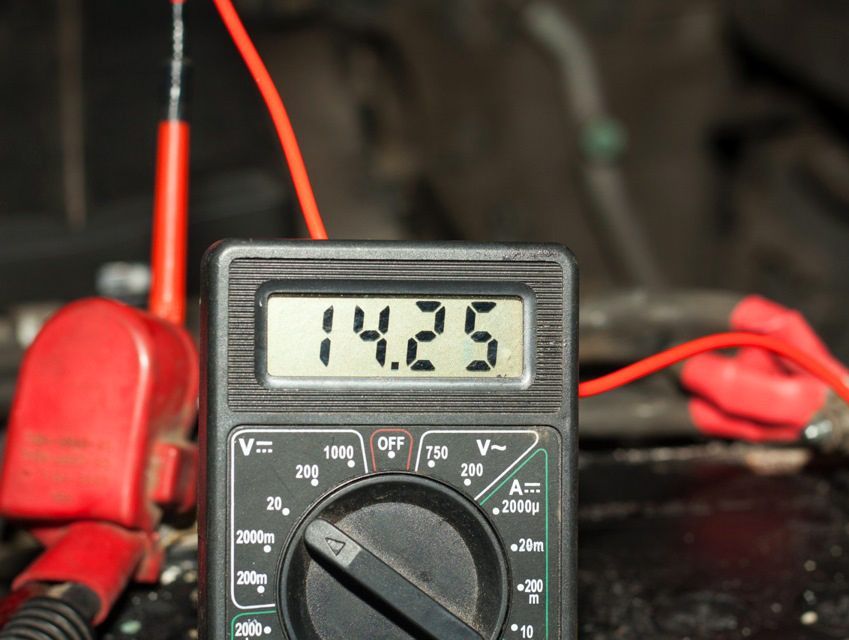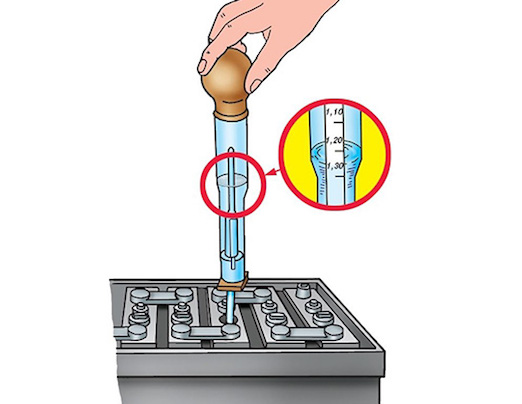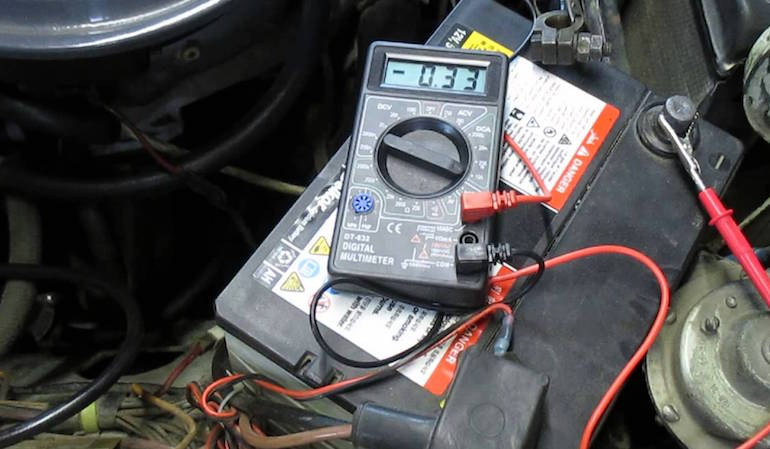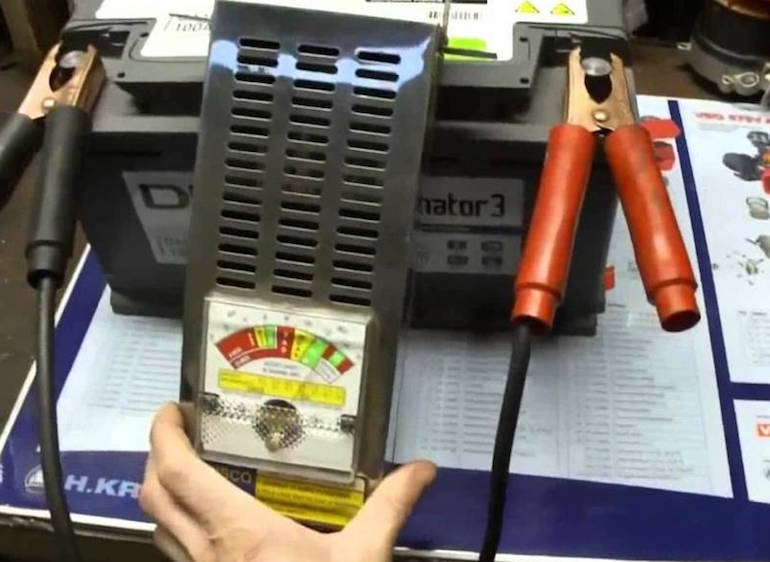
How to check the car battery for performance? Tester, multimeter and without devices
The battery is an important element of the car. On average, its service life is four years or more. To ensure the longest possible battery life, it is necessary to regularly check its performance. This must be done both at the time of purchase (pre-sale check) when issuing a guarantee, and during scheduled diagnostics or if any problems with starting the engine are detected.
Electrolyte density measurement
The easiest way to check the health of the battery is to measure the density and electrolyte level. We have already considered the issue of electrolyte density in more detail on Vodi.su in previous articles. We note only the most important points.
It is possible to check the density only in serviced or semi-serviced batteries, since they have special plugs through which distilled water can be poured when the electrolyte boils away. Inside each of the cans you will see plates and marks to check the level. The plates must be evenly coated with electrolyte. Rapid boil-off of the liquid may indicate problems with the regulator relay. If the level is too high, the liquid may simply splash out. It is also possible to build up gases that can cause the battery to explode.

Check the density using an aerometer - a flask with a pear at the end and a float inside. The narrow end is inserted into one of the plugs and the electrolyte is drawn inside and look at the float scale. For Russia, the optimal density is 1,27 g/cm3 in the warm season and 1,28 g/cm3 in winter. The density should be the same in all banks. If it is too low or high, this indicates a discharge or overcharging. In addition, when checking the density, you can assess the state of the electrolyte - it must be transparent without any impurities.
Checking with a multimeter
A multimeter is a tool that is desirable for any motorist to purchase. This tool measures the voltage at the terminals. The test can be carried out both with the engine running and with the engine off.
If we are talking about pre-sale diagnostics in a store, then usually all batteries come from the factory 80 percent charged. But even this voltage is quite enough to start the engine, and the battery is already recharged from the generator while driving.
With the engine off, the voltage at the terminals should show 12,5-13 Volts. To start the engine, 50% of the charge (approximately 12 volts) should be enough. If this indicator is lower, this indicates a discharge, you may need to light it from another car. With the engine off, it is better to measure the voltage before the trip, and not after it, since the numbers can vary greatly, which will lead to incorrect conclusions.

With the engine running, normal voltage is between 13 and 14 volts. The numbers may be higher, in which case it means that after a long trip the battery is discharged, and the generator is working in enhanced mode. Ideally, after 5-10 minutes, the voltage should drop to 13-14 V.
If the voltage is below 13 V, this is evidence that the battery is not fully charged. Although, in order to obtain more accurate data, all consumers of electricity should be turned off - headlights, radio, climate control, etc. By the way, at car services, by turning consumers on and off, current leaks can be detected. That is, if the multimeter shows 14 V when the motor is on, you alternately turn on the headlights, backlight, and so on. Ideally, the voltage should decrease by 0,1-0,2 V. But if, with all consumers turned on, the voltage drops below 13 V, then there are problems with the generator brushes.
Also, at low voltage with the engine running, you should pay attention to the condition of the terminals and contacts - when they are oxidized, the voltage drops significantly. You can clean them with a soda solution and sandpaper.
Load fork
The load plug is a measuring device that is able to simulate the load on the battery created when the engine is started. The change in voltage is displayed. If you buy a new battery in a store, the seller is obliged to check it with a load plug, while it is desirable that all plugs (if any) are unscrewed.

If the battery is faulty, then when the load is applied, the electrolyte will literally begin to boil away in one of the cans and a characteristic sour smell will spread. The arrow showing the voltage should not fall. If all this happens, then require a battery replacement.
Ideally, when you connect the load plug to the battery, the screen should display a voltage of at least 12 volts. If it is lower, it is worth clarifying the date of production and the shelf life of the battery in the warehouse. The production date is stamped in the serial number. When a load is applied, the voltage changes from 12 V to 10 and stays at this level. It is not necessary to apply the load for more than 5 seconds. If the battery is fully charged, but the voltage drops below 9 V when the load is applied, then it will not be able to provide starting current to start the motor.


Watch this video on YouTube
Loading…

